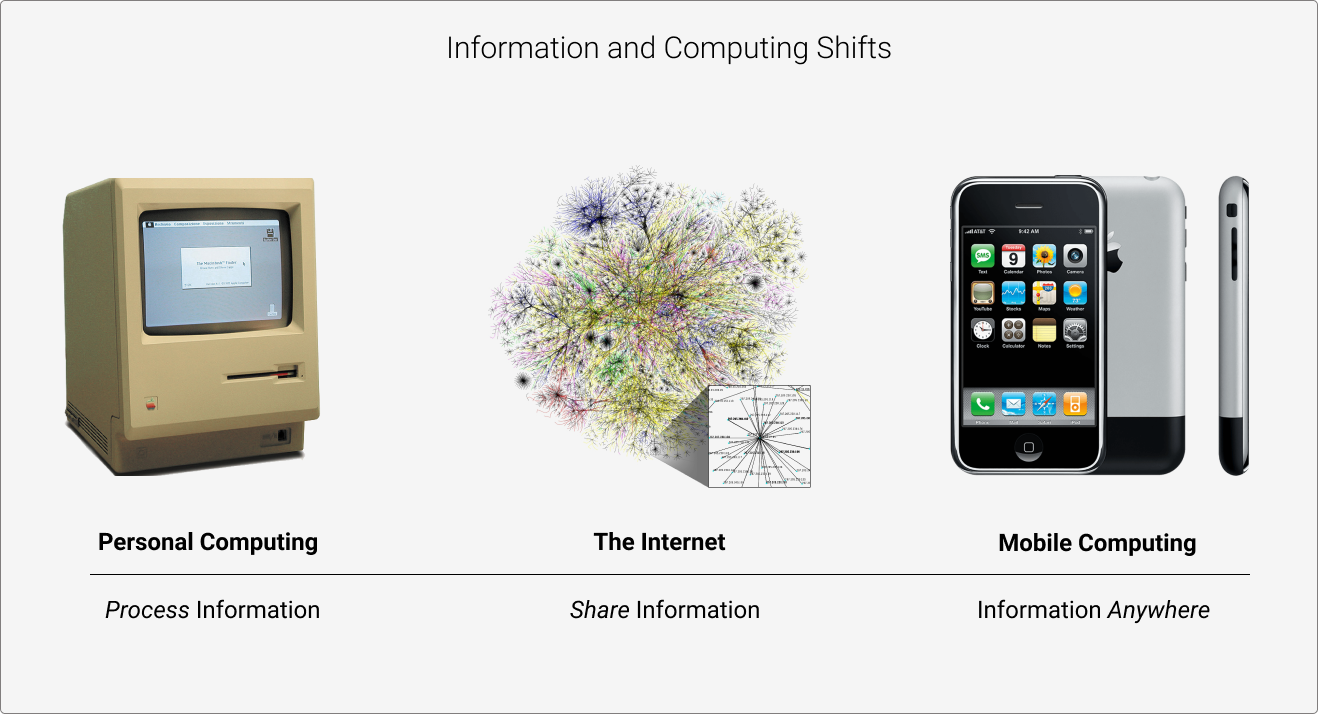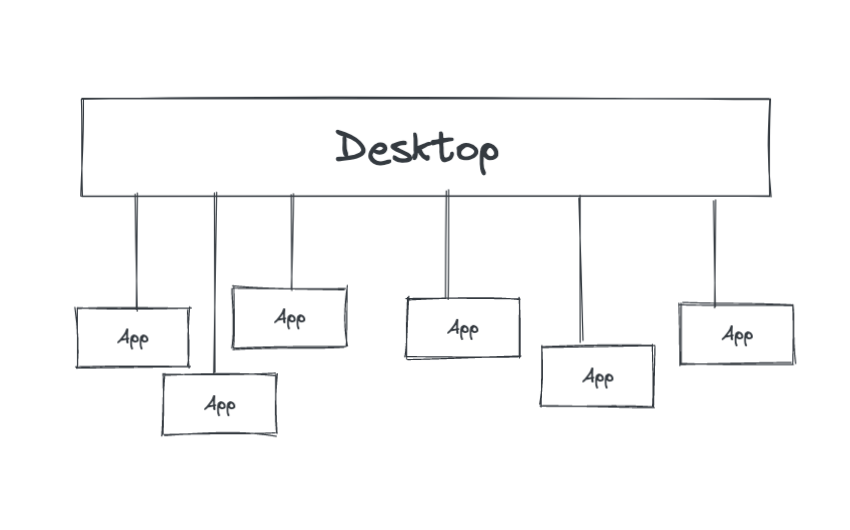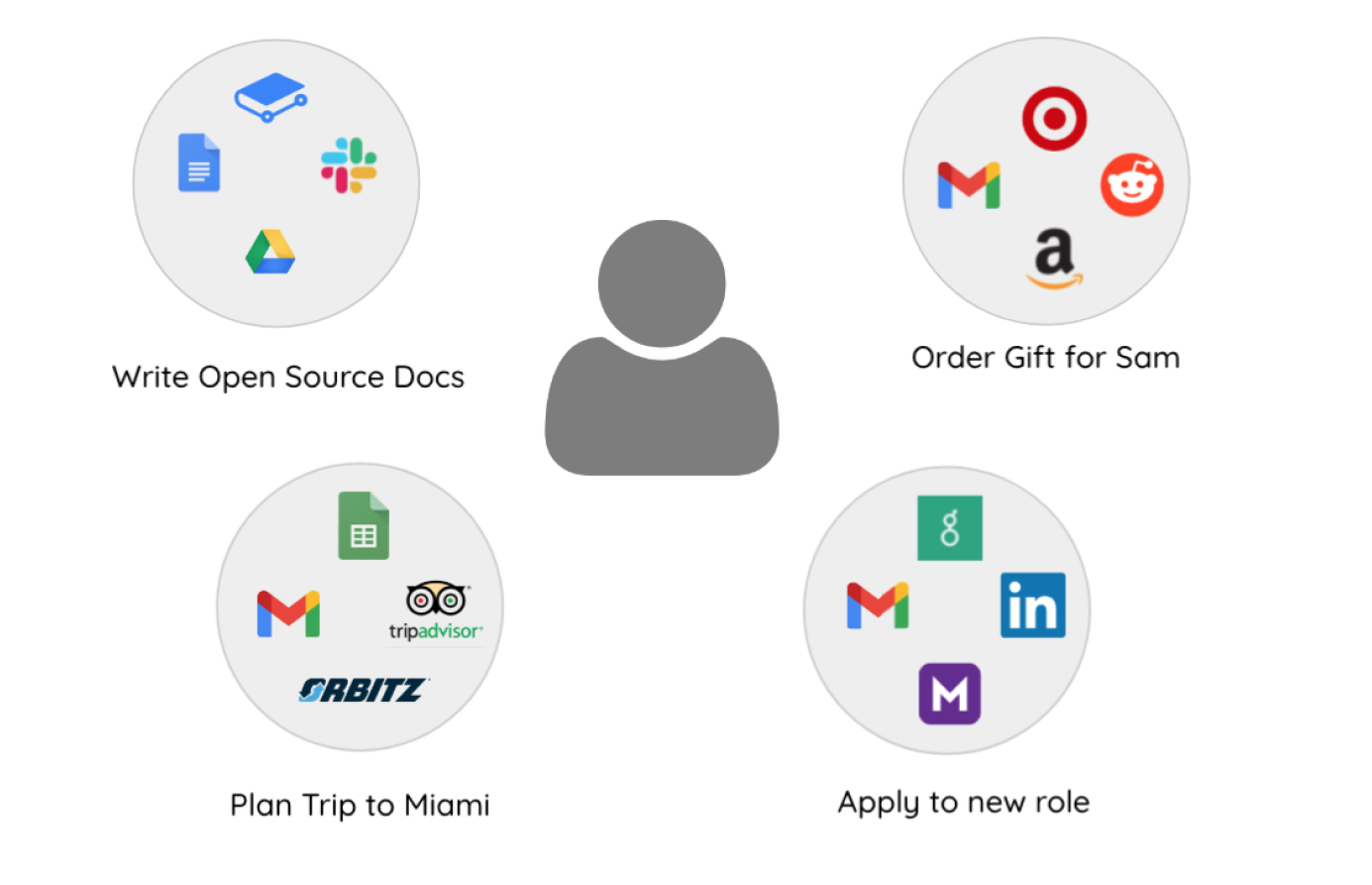Every fundamental breakthrough from the personal computing in the past 40 years has a deep connection with how humans interact with information.

new technologies change the way people interact with information
There have been so many tech trends in the past: AI, Blockchain, and VR/AR, but I’m ever so convinced that the measure of how profound a technology is over time has to be about solving an information gap.
At the turn of each large personal computing paradigm from the 80’s, there were distinct needs, or even “cool wants” to process information faster, move it from one place to another, and answer questions from anywhere.
However, I know that the human information story is not complete. We have not mastered our relationship with infomation. We have a new gap to fill, and that’s what happens when you have too much information?
It spells opportunity for a new wave of technology.
App-Centric Model
Most information today is accessed through apps. I use the term app loosely. It can be a web app, desktop app or even a mobile app.
Our app-centric model is massively a result of the internet and an obsession with ecosystems. Apps are portals to communicate, coordinate and access new information. Each provider wants to own a different train on the information railroad, providing their own services.

Our general app-centric model
Contrast this to the 80’s, sans internet, and we lived in a document-centric world. Computer interfaces were mostly centered around local computation and the management and editing of files and calculations.
The app-centric model has largely been amplified by the shift to smartphones. An app for everything
The OS is primarily responsible for managing apps, while information is largely handled within an app. This creates a few known problems:
-
Data Siloes: Each app holds information for every interaction and transaction. Information does not live in one place. It is fragmented. You do not know where things live.
-
Privacy: Since data is siloed across domains, apps and people, we don’t know where things live or how information is being used. We have to trust apps.
-
Attention Economy: There are things we care about, and things we don’t. If the internet is monetized by ads, and they aren’t helpful, our focus is lost.
Distraction or Not
Is Facebook a distracting website?
See my answer
Most people would say yes. In fact, there are tons of distraction blockers
Is Gmail a distracting website?
See my answer
Though you may have thought othwerwise, I would say yes. Have you ever opened your email, thinking you need to respond to something, and forget it entirely because of the shiny new unread item. Very similar to the doorway effect
The answer with apps being distracting or helpful is much more nuanced than we take it for.
When we set out do something, and an app changes us our intended behavior to a different one, for example, clicking an ad, we find it distracting. Otherwise, when an app does the job we expect to at a given time, we find it useful.
We have too many intents
Now think about the number of times you open Gmail in a day. Did you open it for the same reason every time? Probably not.

Our general desktop-app model
Apps hold a real place in our lives. However, we’re using the same app to do more than one thing at a time.
Gmail isn’t just a mail sending app. It’s the place for my shipping confirmation, my college admission, and new offer letter.
Amazon isn’t just some marketplace, it’s the gift for Tom. And if I don’t get a shipment confirmation in Gmail, then I’ll never know if Tom got his gift.
The things we do in apps hold real value in our heads. However, Amazon, Google, Gmail and Fedex are not truly different apps. They are stitched together with one intent, the goal to purchase a gift for Tom. That’s what we call context. An invisble layer that glues apps together.

How I use my apps
And computers today have no real way of understanding it or figuring it out. If they did, our digital world would be radically different.
Read Part 2: Context Centric Computing ->
Draft Post
This post is draft mode. You will need to provide a password to read it.
